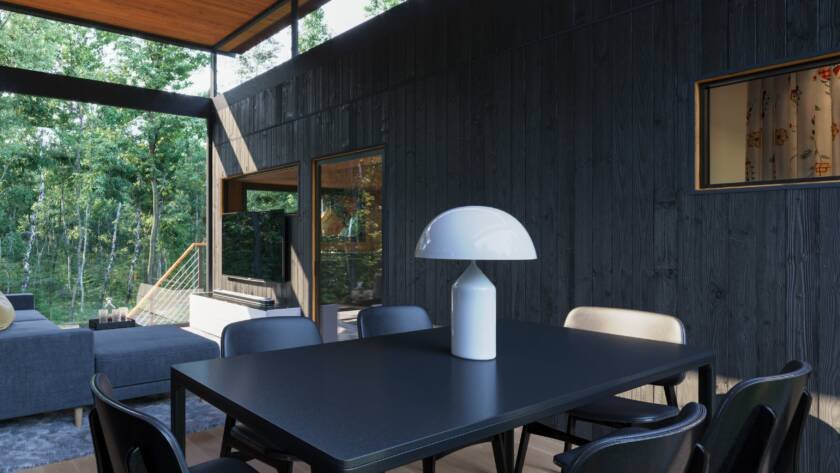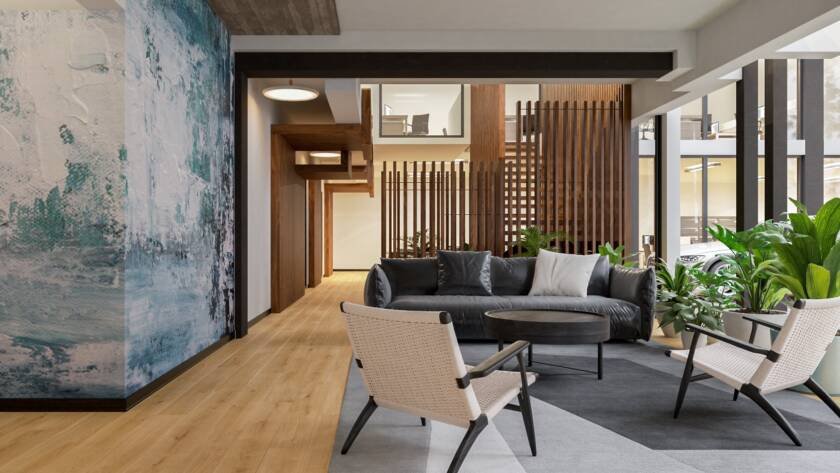From real estate to entertainment, these skills transform how we visualize, create, and interact with the world. If you’re wondering where 3D rendering skills are making the biggest impact, you’re in the right place. Let’s dive into the top industries where 3D rendering is useful and in high demand.
1. Real Estate
Visualizing Properties with Precision
The real estate industry has undergone a significant transformation thanks to 3D rendering. Traditional property listings with static images and floor plans are becoming a thing of the past. Instead, real estate agents and developers are leveraging 3D renderings to offer immersive virtual tours and stunning visuals of properties. This approach provides potential buyers with a lifelike experience of the property, even before it’s built.
Key Benefits:
- Enhanced Property Presentation: 3D renderings allow buyers to explore properties in detail, seeing how different design elements come together.
- Improved Marketing: High-quality renderings are used in marketing materials, online listings, and social media, attracting more interest and accelerating sales.

2. Architecture
Bringing Architectural Designs to Life
Architects are among the primary users of 3D rendering technology. The ability to create realistic visualizations of architectural designs helps architects present their concepts to clients, stakeholders, and the public. This not only aids in communication but also in refining designs based on feedback before any physical work begins.
Key Benefits:
- Effective Communication: Renderings make conveying design ideas and concepts easier, reducing misunderstandings.
- Design Validation: Allows for assessing aesthetics and functionality before the construction phase, minimizing costly changes later.

3. Entertainment and Media
Creating Immersive Experiences
3D rendering is pivotal in producing high-quality visual content in the entertainment and media industry. Whether it’s for movies, video games, or virtual reality experiences, 3D rendering is essential for creating realistic characters, environments, and special effects.
Key Benefits:
- Realistic Visuals: 3D rendering helps create lifelike and engaging visual content, enhancing the viewer’s experience.
- Creative Flexibility: Provides designers with the ability to experiment with complex visual effects and animations that push the boundaries of imagination.
4. Product Design and Manufacturing
Streamlining Design and Prototyping
Product designers and manufacturers are increasingly relying on 3D rendering to visualize and prototype products before physical production begins. This approach enables designers to explore different iterations and make necessary adjustments without needing multiple physical prototypes.
Key Benefits:
- Cost Savings: Reduces the need for costly and time-consuming physical prototypes.
- Faster Iterations: Facilitates rapid changes and improvements, leading to more efficient design processes.

5. Interior Design
Visualizing Spaces in Detail
Interior designers use 3D rendering to help clients visualize how different elements will come together in a space. From furniture arrangement to color schemes, 3D renderings allow designers to create detailed and realistic representations of interior spaces, aiding in decision-making and ensuring client satisfaction. Click the link to see examples of interior design renders
Key Benefits:
- Client Approval: Helps clients visualize their future space, leading to more informed decisions and fewer revisions.
- Design Exploration: Allows for the testing of various design options, including different layouts, materials, and color schemes.

6. Healthcare and Medical
Advancing Medical Visualization
3D rendering is making strides in medical visualization and education in the healthcare industry. Surgeons and medical professionals use 3D models for planning complex surgeries, while educational institutions use them to teach anatomy and medical procedures.
Key Benefits:
- Surgical Planning: Provides detailed visualizations of patient anatomy, aiding in precise surgical planning.
- Educational Tools: Enhances the learning experience by offering detailed and interactive human body models.
7. Education and Training
Enhancing Learning with Interactive Visuals
Educational institutions and training organizations are incorporating 3D rendering into their curricula to create interactive and engaging learning experiences. 3D renderings help students and trainees better understand complex concepts and scenarios, from science simulations to historical recreations.
Key Benefits:
- Interactive Learning: Provides immersive and interactive educational experiences, improving comprehension and retention.
- Simulations and Scenarios: Allows the creation of realistic simulations and training scenarios, enhancing practical learning.
8. Automotive Industry
Innovating Vehicle Design
The automotive industry has embraced 3D rendering to visualize and design vehicles. Car manufacturers use renderings to explore different design options, showcase new models, and conduct virtual crash tests before physical prototypes are created.
Key Benefits:
- Design Innovation: Facilitates experimentation with new design concepts and features.
- Marketing and Pre-Launch: Allows for creating high-quality visuals for marketing campaigns and pre-launch promotions.

Conclusion
The demand for 3D rendering skills is flourishing across various industries, from real estate and architecture to entertainment and healthcare. By leveraging these skills, professionals can enhance visualization, streamline processes, and create more impactful designs and experiences. Whether you’re looking to break into a new field or advance your career, 3D rendering offers exciting opportunities for growth and innovation.
If you found this post informative, feel free to share it with others who might benefit from learning about the diverse applications of 3D rendering. The future of visualization is bright, and it’s only getting more dynamic!



